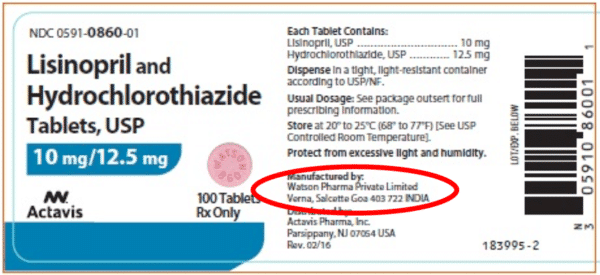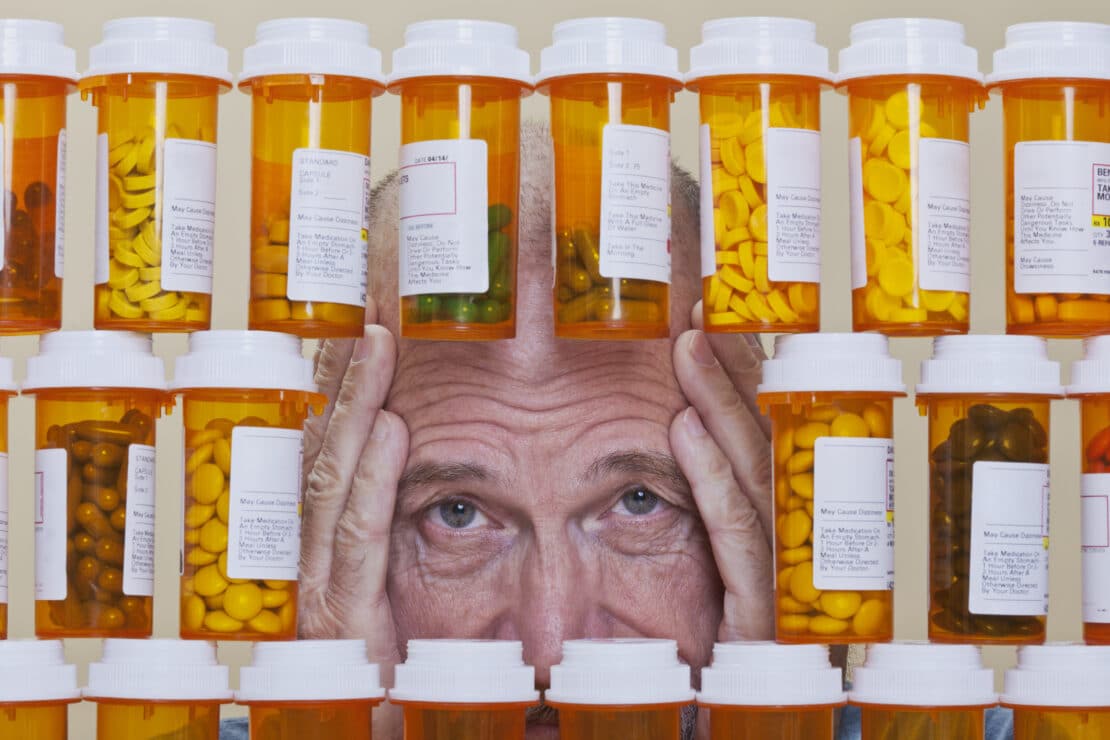The FDA stopped inspecting foreign drug factories after the pandemic hit. The move was made to keep inspectors safe from COVID-19, but it also threatens the quality of America’s prescription drug supply.
Three-fourths of the pharmaceuticals sold in the U.S. come from China and India.[1]
In a typical year, the FDA carries out at least 600 foreign drug factory inspections. In China, 67% of inspections have found problems. In India, the figure is 58%.[2]
It has now been over a year since any pharmaceutical manufacturing facilities in China and India have been examined in person by American officials for quality control. This means manufacturing problems are going undetected and not being corrected. The medications you are now taking were likely manufactured without much, if any, FDA oversight. [3]
Foreign Drug Factories Are Rife With Problems
Even before the pandemic, when there were regular inspections, foreign-made medications had repeated problems with quality control:[4]
- In 2019, the FDA recalled the blood pressure drug valsartan because some of the China-made tablets were contaminated with a carcinogen.[5]
- The India pharmaceutical company Ranbaxy agreed to stop making the statin drug atorvastatin after its pills were found to contain shards of glass.[6]
- A China factory intentionally added a chemical to a blood-thinning medication to stretch the drug’s yield and profitability. Scores of American patients died from allergic reactions to the chemical.[7]
Katherine Eban is author of the book Bottle of Lies. It meticulously documents how Asian drug factories routinely produce tainted or diluted medications, and then try to cover it up.
Eban says she has caught overseas manufacturers altering and shredding documents. In some instances, they produce fake records.[8]
“They literally have data fabrication teams that come in, in advance of inspections, shred documents, fabricate documents, invent quality data,” she said.
Now, with no inspections, there’s no telling what is coming out of these factories.
The FDA recently announced that it is starting to do “remote interactive” inspections. Essentially, these are video visits.[9]
Anyone who has done a Zoom meeting understands that it’s better than nothing, but certainly not the same as being there in person.
How to Tell If Your Medications Are Made in China or India
It’s often not easy to find out where your medications are produced. Typically, there is no “Made in China” or “Made in India” label on pill bottles.[10]
Start by asking your pharmacist. If they don’t know, visit the website for the U.S. National Library of Medicine HERE.
Type the name of your drug into the search box. Find the drug in the search results. Put your cursor over the packaging information on the left side of the page.
You’ll see a label like the one below. It will show where the medication was manufactured. In this case, the drug was made in India.

3 Ways to Reduce Your Risk
Since so many medications are now made in China or India, it may be difficult or impossible to find a domestic-made alternative. But there are ways you can limit your risk.
Stick with what works: If a drug is working for you, stay with it. It could be risky to switch to another brand or formulation during the inspection hiatus.
On the other hand, you should talk to your doctor if you are taking medications made in China or India and your health situation has worsened during the pandemic and you don’t know why. Ask your practitioner if the drugs you are taking could be the issue. You may want to switch to a different brand to see if it makes a difference.
Minimize your use of prescription drugs: The best way to make sure that a drug doesn’t hurt you is to not take it.
Of course, this is not always an option. But people often keep taking a medication long after it stops helping them. They are put on a drug by their doctor, and they stay on it simply because their physician never tells them to stop.[11]
A 2017 study found that when patients asked their doctors if they could discontinue some of their meds, 71% were told they could stop taking at least one.
If you’re on long-term medications, ask your doctor if you can discontinue them and whether there is a safer alternative.
Consider non-drug options: Lifestyle changes and natural remedies are often just as effective as prescription medications.
Click on the links below to find non-drug options for 12 common types of prescription meds:
Nonsteroidal anti-inflammatory drugs (NSAIDs)
The average American adult now takes four prescription drugs a day. During the pandemic, it’s more important than ever that we do what we can to make sure our medicines are safe and effective.[12]
Editor’s Note: The FDA has lost control of the nation’s drug supply. Discover how to protect yourself and your loved ones. Get all the details in our monthly journal, Independent Healing. Go HERE.
Related Articles
Natural Alternatives to the Most-Prescribed Drugs
Coronavirus: What You Should Know About These Blood Pressure Drugs
[1] https://www.peoplespharmacy.com/articles/can-you-trust-your-drug-quality-maybe-not?utm_source=The%20People%27s%20Pharmacy%20Newsletter&utm_campaign=cbeb99b911-MC_D_2021-04-27%26subscriber%3D1&utm_medium=email&utm_term=0_7300006d3c-cbeb99b911-221156881&mc_cid=cbeb99b911&mc_eid=d45e3bef7f
[2] https://www.statnews.com/2019/10/29/data-falsification-still-problematic-china-india-generic-drug-plants/
[3] https://www.webmd.com/drug-medication/news/20170803/americans-taking-more-prescription-drugs-than-ever-survey
[4] https://www.wsj.com/articles/relying-on-foreign-drugs-is-dangerous-11588093635
[5] https://khn.org/news/how-tainted-drugs-reach-market-make-patients-sicker/
[6] https://abcnews.go.com/Health/generic-lipitor-production-halted-clear-glass-drug/story?id=17844590
[7] https://www.nytimes.com/2019/05/13/books/review/bottle-of-lies-katherine-eban.html
[8] https://www.npr.org/sections/health-shots/2019/05/16/723545864/the-generic-drugs-youre-taking-may-not-be-as-safe-or-effective-as-you-think
[9] https://www.fda.gov/news-events/press-announcements/fda-provides-guidance-remote-interactive-evaluations-oversight-drug-facilities-during-covid-19
[10] https://www.latimes.com/business/lazarus/la-fi-lazarus-drugs-country-of-origin-20180515-story.html
[11] https://www.drugs.com/article/safety-tips-stopping-meds.html
[12] https://www.webmd.com/drug-medication/news/20170803/americans-taking-more-prescription-drugs-than-ever-survey

